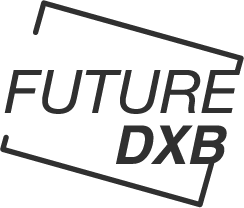Veracode Reveals Automation and Training Are Key Drivers of Software Security for Financial Services>
(BUSINESS WIRE)–Veracode, a leading global provider of intelligent software security, today released new research that unveils the key factors influencing flaw introduction and accumulation in the Financial Services sector. The security performance of financial applications generally outperforms other industries, with automation, targeted security training, and scanning via Application Programming Interface (API) contributing to a year-over-year reduction in the percentage of applications containing flaws.
Against a backdrop of major regulations impacting the financial services sector, including the U.S. Securities and Exchange Commission cybersecurity disclosure rules and the E.U. Digital Operational Resilience Act (DORA), Veracode’s study provides recommendations to reduce risk from software vulnerabilities. While nearly 72 percent of applications in the Financial Services sector contain security flaws, this is the lowest of all industries analyzed and an improvement since last year.
“Financial services made a strong showing across the board in this year’s analysis,” said Chris Eng, Chief Research Officer at Veracode. “Increasing competition and customer expectations, combined with tighter regulations across the industry, have put greater pressure on developers and security teams to find and fix flaws at scale. Moreover, the explosion of AI and Machine Learning has pushed the pace of software development to a new level, leading to the hyperproliferation of flaws. The sector has done well to better its performance, but there is more to be done and financial organizations would benefit from increased automation and secure coding techniques to help them prevent, detect, and respond to vulnerabilities faster than ever.”
API Scanning and Training Lowers Likelihood and Introduction of Flaws
Veracode’s research found Financial Services organizations see stronger effects from the positive elements of scanning via API and security training, compared with the cross-industry average. Scanning via API is a measure of maturity in a software security program, and enterprises that integrate API usage likely have greater automation and control over the development pipeline. In fact, those that leverage scanning via API perform 11 percent better than the baseline probability of non-Financials when it comes to flaw introduction per month. Adding interactive security training into the mix reduces this further, with the two factors combined lowering the chance of flaw introduction by 19 percent per month.
The impact of scanning via API and security training on the number of flaws when they are introduced is even more pronounced. When Financial Services teams completed 10 interactive security training modules, they introduced 26 percent fewer flaws, putting the sector’s performance well above the all-industry average. Similarly launching scans via API had a stronger influence on the number of flaws introduced in Financial Services applications than in other industries.
Eng said, “The data indicates that Financial Services organizations benefit significantly from automation through API usage. Reaching automation is aspirational for many organizations but we see that launching scans via API correlates with a lower probability that flaws will be introduced, and then a reduction in the amount of flaws that do find their way into software. Unsurprisingly, training also has a direct correlation with reduced flaw introduction.”
The Power of AI and Machine Learning
The State of Software Security report also analyzed language preference by vertical and found, at 51 percent, Java is almost a de facto standard within the Financial Services sector. Veracode Fix, an AI-powered remediation tool launched earlier this year, leverages machine learning to generate fixes for 74 percent of Java static findings. Such a dramatic reduction in time and effort empowers organizations to improve security posture and lower risk even further, freeing up capacity for innovation and creation. Moreover, since Java applications are overwhelmingly (>95 percent) comprised of third-party code, Veracode’s data shows the industry benefits of Software Composition Analysis to bolster the safety and integrity of open-source code inclusion.
The Veracode State of Software Security: Financial Services report with full details and recommendations is available to download on the Veracode website.
The full global Veracode State of Software Security 2023 report is available to download here.
About the State of Software Security Report
The 13th edition of Veracode’s annual report on the State of Software Security examines historical trends shaping the software landscape and how security practices are evolving along with those trends. This year’s findings are based on the full historical data available from Veracode services and customers and represent a cross-section of large and small companies, commercial software suppliers, software outsourcers, and open-source projects. The report analyzes data collected from more than 27 million scans across 750,000 applications, and contains findings about applications that were subjected to static analysis, dynamic analysis, software composition analysis, and/or manual penetration testing through Veracode’s cloud-based platform. This new report highlights Financial Services-specific findings against Manufacturing, Retail & Hospitality, Technology, Healthcare, and the Public Sector.
About Veracode
Veracode is intelligent software security. The Veracode Software Security Platform continuously finds flaws and vulnerabilities at every stage of the modern software development lifecycle. Using powerful AI trained on a carefully curated, trusted dataset from experience analyzing trillions of lines of code, Veracode customers fix flaws faster with high accuracy. Trusted by security teams, developers, and business leaders from thousands of the world’s leading organizations, Veracode is the pioneer, continuing to redefine what intelligent software security means.
Learn more at www.veracode.com, on the Veracode blog, and on LinkedIn and Twitter.
Copyright © 2023 Veracode, Inc. All rights reserved. Veracode is a registered trademark of Veracode, Inc. in the United States and may be registered in certain other jurisdictions. All other product names, brands or logos belong to their respective holders. All other trademarks cited herein are property of their respective owners.
View source version on businesswire.com: https://www.businesswire.com/news/home/20231025298360/en/
